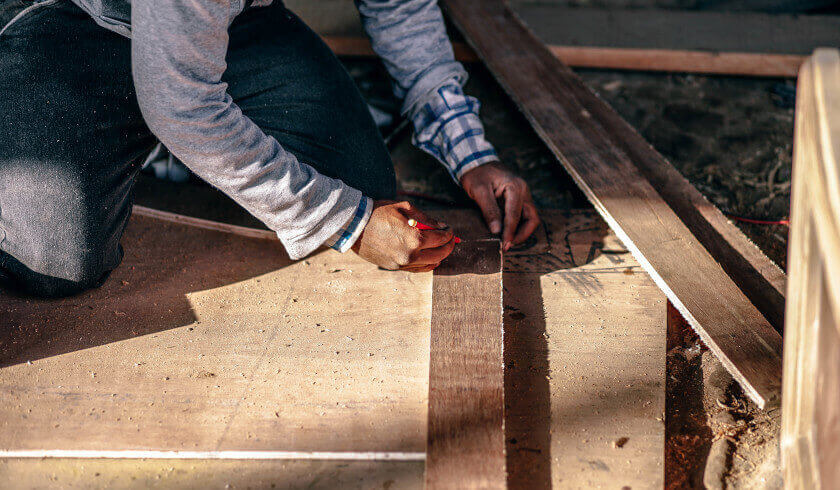Renovation tip: Follow the ‘worst house, best street’ strategy
Buying a “cosmetically-challenged” property isn’t necessarily a bad thing, as many seasoned property investors would know. In most cases, a well-timed and well-executed renovation can make your money work even harder for you. How do you make this strategy work?

Before jumping into a renovation project, Positive Real Estate’s Sam Saggers encouraged investors to reassess goals and review their portfolio to determine the right strategy to implement.
Are you renovating to sell the property at a higher price or do you plan to hold the property and put it up for rent? Will you go through this as an owner-occupier or as an investor?
“All of these strategies will yield different results,” the property professional highlighted.
He explained further: "If you plan to renovate and sell, you need to be certain that you’ll be guaranteed a profit … but if you plan to hold, consider the fact that the better condition the property is in from the start, the less renovations you need to do, which translates into lower maintenance costs."
Once you have identified the right strategy for you, only then will it be a good time to find the right property and pick the best suburb for your investment, he said.
Choosing a property
Many investors follow the 'worst house, best street' strategy when looking for a real estate asset that could be perfect for renovation.
Before picking a property to buy, Mr Saggers suggested studying the areas you want to buy in and finding a professional who can expertly guide you through the suburbs.
After all, a renovation is not always a guarantee of an increase in value, so you need to factor in other growth drivers, including socioeconomic factors such as pricing, demographics, lifestyle, infrastructure, and development plans.
“Keep your focus limited to only one to three suburbs—all of them close geographically and similar in design and demographics,” the property professional said.
Once you have picked the best suburb, find a property that simply has 'good bones', or those that may need some cosmetic improvements but are otherwise strong and sturdy constructions.
According to Mr Saggers, peeling paint, a fence in need of repair, waist-high grass, and outdated fixtures are some of the features that don’t need to bother you too much.
In contrast, you may want to steer clear of properties that show structural faults and other major problems, which may stack up and lead to more costs in the future.
Kitchens and baths must be 'fairly easy to modernise' as these are the rooms that usually matter most to tenants or home buyers and are also regarded as house areas that deliver maximum return with minimal effort.
“Something as simple as some new cupboard handles, a bit of tile and laminate paint, a glass shower screen, and some inexpensive window treatments can do wonders for a property’s appeal and are very cost-effective improvements,” Mr Saggers said.
An 'open-living' floor plan also attracts tenants and buyers as it is seen as a sign of a well-constructed home. This gives you the opportunity to reorganise windows and walls in order to create a more modern 21st century home at only a low price.
Boutique block of units also appeals to them because of its aesthetics—buildings that are 'structurally sound yet have old, tired fittings on the outside [that makes you feel like you’re] stuck in the 70s or 80s!' according to the property professional.
Aside from engaging a real estate agent, Mr Saggers also recommended getting in touch with a successful renovator to make sure that the renovation project will be worth its weight in gold at the end of the day.
Ask the renovator to look into your property and give you an expert advice on how to move forward.
Feasibility analysis
After assessing the suburb's growth drivers and checking the property on site, Mr Saggers suggested conducting a feasibility analysis.
This analysis may include the demographics of the area, which will largely influence the demand for dwellings.
For example, according to the property professional, a suburb where prospective tenants are mostly family means that you should focus on family-friendly features such as a mudroom or a spacious storage when renovating.
Aside from the demographics, you may also want to look at rent projections, which you can obtain from agents who are familiar with the suburb.
These figures can be used to determine how you will go about with your renovation project.
Mr Saggers explained: “Learn what works by studying renovation projects in the suburb that have proven profitable to their owners—how can you make as much profit as possible while spending as little as necessary?”
“Just as you would do with an ‘ordinary’ property investment purchase, arrange to have inspections done before settlement because you’ll need hard data to crunch the numbers to determine a project’s viability,” he added.
At the end of the day, he said, doing due diligence plays a big role in the success of your renovation and the overall growth of your portfolio.
“Renovation can be a great way to increase your investment portfolio’s bottom line, [but] they can negatively impact your finances if executed poorly—either by overcapitalising or not buying well at the start,” the property professional concluded.




